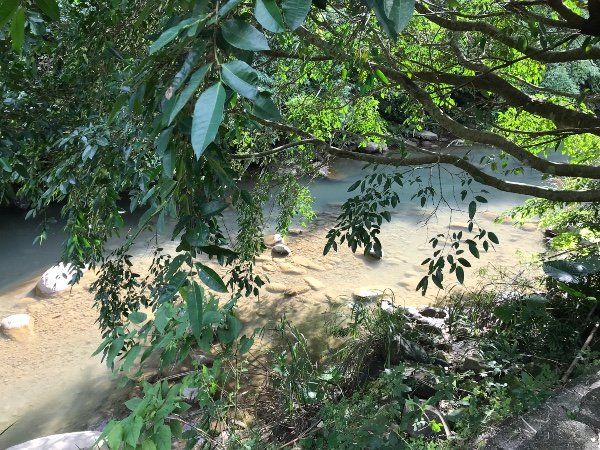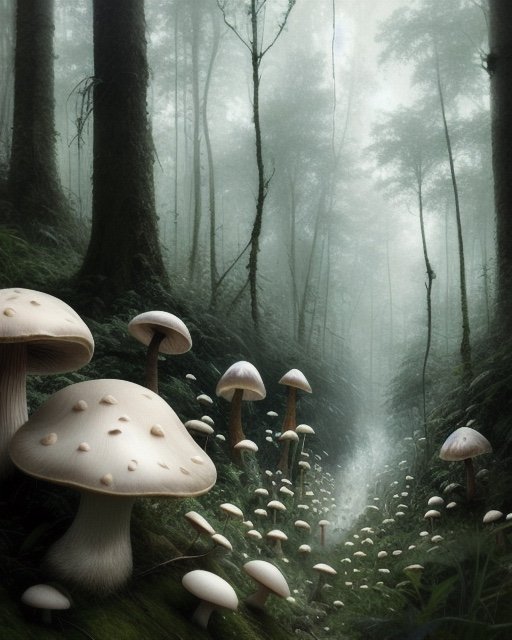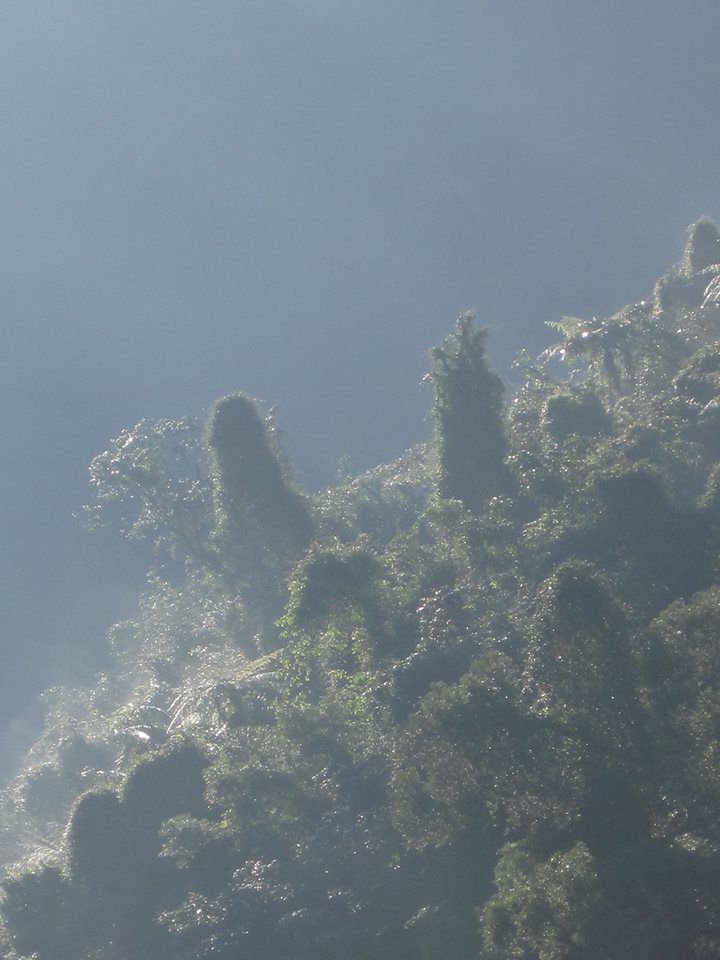Magic Forests in Fantasy & Myth
Magic forests have been a part of fantasy since the beginning, and were a part of literature and mythology before that. The attraction of the deep, mysterious forest is strong, and I’ve written stories set in vast primeval forests, too.
Forests are places of mystery, and they often have a feeling of danger, too. At night, a deep forest can easily become a threatening place.
Ursula Le Guin wrote the novel The Word for World is Forest, about a forest planet and the challenges it faced when humans attempted colonization. Earth used to be a forest planet, too, at least where the environment permitted. Where I live, in Taiwan, the word for mountain might as well be forest. I can hear its sounds as I write this article.
 Forest and river near my home
Forest and river near my homeFor thousands of years, forests were places pushing against humanity, limiting growth—although now the balance has passed far the other way. Forests were places of both sanctuary and danger with robbers and wild animals. The forests around my home are still dangerous: full of poisonous snakes and spiders.
Robin Hood is one of these tales; Sherwood Forest was dangerous to some, but a sanctuary to others.
I think one reason for the continuing presence of forests, and magic forests, in stories is because of the shared human experience: we’ve lived, hunted, worked and travelled through them for thousands of years.
But forests also have a special atmosphere.
A bluebell wood in spring is beautiful, and walking through a shady forest on a hot summer day is pleasant. Yet in the darkness, the mood of the forest is different—and often threatening.
As visibility drops, imagination increases. A dark, misty, or thick forest allows the imagination to wander and the mystery to increase. The stuff of fantasy stories.
So it’s not surprising that magic forests are common in fairy tales, literature, and mythology.
The World Tree appears in many religions and mythologies. One of these is Yggdrasil, the mythical tree from Norse cosmology, which connects the Nine Worlds. In some stories, it’s where Woden (Odin) hung himself upside down from Yggdrasil to gain wisdom.
Forests are present in literature. Dante’s Hell begins with Dante struggling through a Dark Wood, unable to find the right road. This is one of many examples.
Much fantasy takes place in magic forests. J.R.R. Tolkien's forests are famous in fantasy: the Old Forest at the edge of the Shire, with Tom Bombadil; Lothlorien, the elven forest; Fangorn, the home of the ents and Treebeard; and Mirkwood, which appeared as two separate forests in his work.
Mirk is the archaic spelling of murk (darkness or thick mist making it hard to see), and conveys the atmosphere of a forbidding forest.
 Whitecaps—the sentient mushrooms from the planet of Prometheus
Whitecaps—the sentient mushrooms from the planet of PrometheusIn C.S. Lewis’s Narnia series, the story begins when the children pass through the wardrobe into a frozen forest, and in the Magician’s Nephew, they find themselves in a world between worlds, which is a forest of ponds, where each pond leads to a different world.
Mythago Wood, by Robert Holdstock, takes place in one of the last piece of primordial forest in Britain. It’s a magic forest, creating myths that come to life. And it’s a place where time moves differently. A leaf dropped in a stream takes months to pass out of the wood when it should have taken minutes.
The Way of the Wyrd, by Brian Bates, takes place in the magic forests of Anglo Saxon Northumbria, at a time when it was beginning to be converted to Christianity. The story places great importance on nature and the spirits found in natural places.
A Christian monk is sent from Christian Mercia into pagan Northumbria to understand the old ways. He accompanies Wulf, a pagan sorcerer. His learning involves hunting for power plants and taking a journey of the spirit when his soul is stolen. All the time, the forest setting of this story adds a sense of mystery.
Tarzan was set in a jungle that was sanctuary to himself and the animals, but a threat to others. The term concrete jungle was once popular, and the city can take on aspects of a forest. In urban fantasy, which often creates a deep forest feeling in the city, the night becomes a dangerous world populated by supernatural creatures and monsters.
Not only do many stories take place in forests, many books about storytelling have the words forest, woods, or trees in their titles. And for good reason.
Forests are places of life, death, and rebirth, reflecting human life. They also reflect our minds, with places of light and dark, consciousness and unconsciousness, which as we move through it, constantly changes in new patterns.
 Strange trees seen from my balcony
Strange trees seen from my balconyIn my stories, young Aina is chased into the ancient forest, where her natural magic awakens, and she learns to speak to animals and plants.
In Blue Prometheus, parts of the story are set in a sentient ancient forest. In my second novel, the heroes journey to the centre of the planet, but once there, they must travel through a strange fiery forest at the heart of the world.
Some of my inspiration comes from the forests, rivers, and old town where I live.
To keep updated, sign up for my newsletter, the RSS feed on my blog, or follow me on Pinterest, Instagram, or Facebook.

New! Comments
Have your say about what you just read! Leave me a comment in the box below.